In This Issue
The opinions, beliefs and viewpoints expressed in this publication are those of the authors. They do not necessarily reflect the opinions, beliefs, viewpoints or official policies of Autism Society Alberta.
|
|
|
End article-->
Autism Alberta's Statement on FSCD
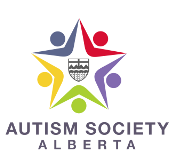
In light of ongoing contact with our members, provincewide town hall meetings held in November 2020, and a recent town hall discussion on January 26, the following reflects our key position on the Family Support for Children with Disabilities (FSCD) program. Our conclusions are drawn from the lived experience of children and families from Alberta’s united autism community (Autism Society Alberta, Autism Calgary, Autism Edmonton, Autism Society of the Regional Municipality of Wood Buffalo, Peace Autism Society, and Chinook Autism Society). We have forwarded our conclusions to Alberta Community and Social Services, and hope that they will be included in their upcoming FSCD program review.
- Keep the FSCD Act and Regulations intact – Alberta is respected globally as a leader for this effective needs-based program
- Resource the FSCD program sufficiently to allow timely, efficient and effective services along a child’s developmental path while strengthening family capacity
- Ensure the FSCD program is universally accessible to Alberta’s diverse population
- Support an array of dynamic service models, evolving with best practices, providing each family choices to align with their individual needs, values and circumstances
- Focus all efforts to explore sustainability on the long-term objective of developing a cross-ministerial framework to coordinate services and programs that address a lifelong path
Optimising program delivery and reducing “red tape” will help, in part, to address pressures of high demand and the critical need for the FSCD program. However, the greatest path to sustainability will come from strategic coordination of all government programs and community services. Such efforts will set Albertans with disabilities and their families up for a more meaningful life with the least dependency on more costly systems of support.
We look forward to ongoing opportunities to share our collective insight. Moreover, as collective impact efforts through Autism Alberta’s Alliance initiative advance, we welcome the Government of Alberta’s involvement in building the framework of a provincial autism strategy.
For more details, please see our attached Town Hall reports:
|
|
|
End article-->
Revealing An Autism Diagnosis
Kitty Parlby
 You’ve just found out that your son or daughter is autistic. This initially affects some parents with a sense of loss or grief. Others disagree with the diagnosis and ignore it, only to have it become more apparent as their child gets older. There are some that jump right in, with a fever to learn all they can. At some point, though, we have to figure out who to share the news with. You’ve just found out that your son or daughter is autistic. This initially affects some parents with a sense of loss or grief. Others disagree with the diagnosis and ignore it, only to have it become more apparent as their child gets older. There are some that jump right in, with a fever to learn all they can. At some point, though, we have to figure out who to share the news with.
My son Eric was diagnosed with ‘severe autism’ at age three, in January 2000. He also has an intellectual delay. By nature I am a very open person, so we revealed his diagnosis to all family and close friends. Some were supportive, some did not believe the diagnosis, and others had no idea how to relate to Eric after hearing about his diagnosis. Dynamics with our extended family and friends definitely shifted, and that’s okay. Life is change, and you may feel the need to surround yourselves with those who are supportive, or at least accepting.
Siblings may soon sense that something is up. They may feel sad that their sister won’t play with them. They may not know what to say when other kids tease or bully their brother. They may be afraid of them due to meltdowns. They may feel guilty if something happened when they were supposed to be watching their sister. They may feel mad that their brother is getting so much more of mom and dad’s attention. In cases like these, knowing about their sibling’s diagnosis may encourage understanding and help them find their own supportive role. Be sure to be available for questions and discussion.
What about telling your child that they are autistic? Some thoughts to consider:
- Think about the age, developmental level, and emotional maturity of your child. Is it time?
- Who should reveal the diagnosis? Most often it’s a parent. For a teen or adult it might also include a trusted professional to answer questions and help parents understand their child’s reaction to the news.
- Start with the positive. Autism is only one part of the unique person they are. Like some of their other characteristics, it has positive aspects and challenges. This should be a conversation, not a static disclosure of information.
- Be available for questions. Encourage them to talk about their feelings. You cannot cover everything in one sitting; discussions will evolve over time as their understanding grows.
- Explain that autism is not an illness or disease that they can die from or that will hurt them physically. Assure them that you and others will fully support them with any challenges they may face.
- Explain that autism is a spectrum, as children may be confused if they compare themselves to others whose autism looks very different from their own.
 Choose a time that you’re not likely to be interrupted, when both you and your child are calm. Have you come to terms with their diagnosis yet? You may need time to scrutinize your own feelings and understanding of autism. Choose a time that you’re not likely to be interrupted, when both you and your child are calm. Have you come to terms with their diagnosis yet? You may need time to scrutinize your own feelings and understanding of autism. - Consider visuals (perhaps an ‘all about me’ picture), videos, and books. Explain that many people are autistic. Talk about important people who have autism and have done great things.
- With teens or young adults, you may want to respect their autonomy, giving them some say in charting their course by informing them of the diagnosis.
- Respect their method of processing the news. Some may need space; others need reassurance and extra TLC. Yet others may not believe it at first, or may even display anger. Support their process, wherever they’re at.
- Be aware that many autistic adults recall a feeling of relief when they first learned of their diagnosis.
What are some signs that it’s probably time to tell your child that they are autistic? It may be when you find them asking questions like “why don’t I have any friends?”, or “why are kids calling me weird?” Some specific incident may make an explanation necessary, like if they are asked to leave school. It may be when they are extremely stressed or down on themselves and you can’t pinpoint why. Or, when there’s a good chance they’ll find out from some other source.
Here’s what you DON’T want to happen:
- Don’t let them find out by accident. Do not assume that they don’t have any capacity to understand. They could overhear conversations at home, school, or appointments. They may see paperwork you’ve left out, or see appointments for diagnosis or therapy on a calendar.
- Although they may not express their feelings, their self-worth may be affected. Not knowing they are autistic might have them thinking that they’re unlikeable, dumb, weird, or feeling like they are always in trouble and must be bad.
- They could be sensing the worry, stress, frustration and concern of family members. Without knowing the reason for that, they might make a negative assumption about themselves being the cause.
- Your autistic loved one could have an unconscious feeling that something is very wrong with them, not knowing why they have so many appointments with doctors and specialists.
When did we tell Eric? He never asked questions, despite all the challenges he faced. His intellectual delay is likely a factor. In his early teens, I decided that I could not assume he didn’t have some awareness of being ‘different’. So over a period of a month, at a level appropriate to Eric, I talked about different challenges and strengths people might have, giving examples from our family and people we knew. Later I spoke about his strengths and challenges (autism-related and not). Lastly I pointed out certain things about him, and told him that these things were part of his autism. Since then I will  sometimes bring up the subject in the moment. I might say, “If someone ever asks why you are jumping around like that, you can tell them that you’re autistic.” I feel it’s important to empower him with the vocabulary he might need in real world situations, to speak for himself if he wants to. sometimes bring up the subject in the moment. I might say, “If someone ever asks why you are jumping around like that, you can tell them that you’re autistic.” I feel it’s important to empower him with the vocabulary he might need in real world situations, to speak for himself if he wants to.
I will finish off by saying that, for most of us, it’s a question of when we share the news with our child, not if. Personally, I have always acknowledged in my mind and heart that although he is my child, I must respect that Eric is also his own person.
Kitty Parlby is the mother of a young adult with autism. She is a former special needs Educational Assistant and an autism speaker and consultant with Autism Inspirations. She currently works as a Family Support Worker for Autism Society Alberta.
|
|
|
Autism Calgary School Parent Panel
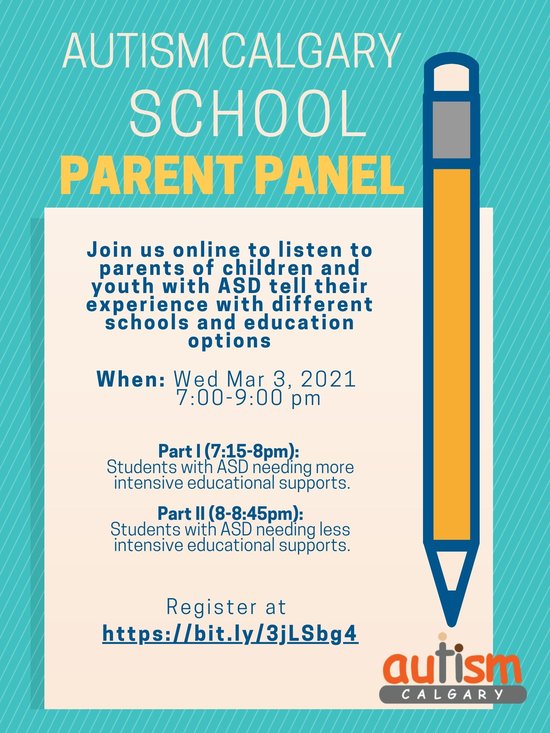
|
|
|
End article-->
Life Uncommon
Karla Power
 I am a teacher. I am a wife, daughter, sister, and friend. I am a mother. I’m a mother of two boys with Autism. I am an advocate. I am many things, just as my boys are, too. They are not defined by their diagnosis, yet our life is rather uncommon. I am a teacher. I am a wife, daughter, sister, and friend. I am a mother. I’m a mother of two boys with Autism. I am an advocate. I am many things, just as my boys are, too. They are not defined by their diagnosis, yet our life is rather uncommon.
I know some people who have one child on the autism spectrum, and I know fewer people with two or more. When we received Kelton’s diagnosis back in December, we were not all that shocked, but we were still shaken. I have spoken many times about the grief that I felt raising one child with struggles, and now that grief seems, at times, to be amplified.
But along with the grief comes great responsibility, and even greater joy. It has taken me a while, but I understand that I am privileged to be a mother to these amazing little boys. Sometimes I don’t always like to hear that I was meant to be their mom or chosen for some special mission, but deep down in my heart, I know it’s true.
I have recently been listening to one of my favorite songs, “Life Uncommon” by Jewel, on repeat. The part of the song that really speaks to me is the lines that say “Lend your voices only to sounds of freedom/Fill your life with love and bravery, and you shall lead a life uncommon.”
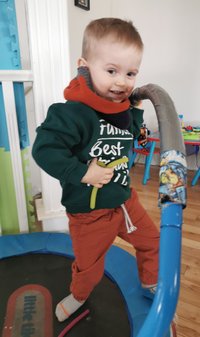 The first line reminds me to not worry so much, and to stop listening to the voices in my head that remind me of how hard things can and will be. Of course, we will face struggles as a family, but we will face them together. Worrying about things doesn’t seem to help much. Living in the moment and enjoying things as they come seems to be a much more productive and joyful way to live. The first line reminds me to not worry so much, and to stop listening to the voices in my head that remind me of how hard things can and will be. Of course, we will face struggles as a family, but we will face them together. Worrying about things doesn’t seem to help much. Living in the moment and enjoying things as they come seems to be a much more productive and joyful way to live.
The second line of the song reminds me that I have to be brave, I have to advocate for my children even more now, and not give up. My hope is that someday all of my efforts will prepare the world for them, rather than forcing them to change themselves to fit in a world that is unprepared for them.
The part about love in this line is the one that speaks the loudest to me. All things are possible with love, and I feel like our family has immense love for one another. Seeing the way my boys interact with each other and with us fills my heart with love everyday.
We have been chosen to love these children just as they are, even if it means leading a life that is uncommon. Instead of birthday and Christmas gifts, we 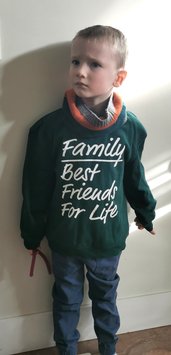 buy gross motor and sensory toys that our children enjoy, and that helps set them up for success. We celebrate the revival of first words said by our two-and-a-half-year-old, and major milestones like our five-year-old finally getting potty training down pat. These are not common time frames for reaching milestones, but they are still special when they happen. buy gross motor and sensory toys that our children enjoy, and that helps set them up for success. We celebrate the revival of first words said by our two-and-a-half-year-old, and major milestones like our five-year-old finally getting potty training down pat. These are not common time frames for reaching milestones, but they are still special when they happen.
We still have so many dreams for our children, the major one being that they will both find their voices and will be able to express their needs and wants to us and others. We will continue to work with them so that they will be the very best version of themselves that they can be. We will be brave and stand up for what is right; we will love them every step of the way; and we will embrace this life of ours, no matter how uncommon it may be.
|
|
|
End article-->
Socially Connecting, Learning, and Meeting While Physically Apart – Ideas for the ASD Community
Maureen Bennie

From the Autism Awareness Centre Inc. Blog:
Meeting and connecting virtually was a part of our world before the pandemic started, but it is now a part of life more than ever. At the moment, it is the only way to socialize safely in larger groups. In some areas of the world, schooling remains online rather than in person.
 There are advantages and disadvantages to being online. The internet allows us to connect with a wider group of people from places outside of our locale. There are groups that meet around specific interests. I have written about my daughter’s improvement in her writing and storytelling ability since joining the Fan Fiction Wattpad group online in March 2020 (over 80 stories written so far). Meeting platforms keep us in touch with family members and friends who we can’t visit with right now. There are advantages and disadvantages to being online. The internet allows us to connect with a wider group of people from places outside of our locale. There are groups that meet around specific interests. I have written about my daughter’s improvement in her writing and storytelling ability since joining the Fan Fiction Wattpad group online in March 2020 (over 80 stories written so far). Meeting platforms keep us in touch with family members and friends who we can’t visit with right now.
Online communication is complex, though. People may misrepresent themselves or be more aggressive with what they say in the absence of in-person contact. Social cues which add to meaning and understanding are missing, such as full body language. Eye contact can feel more intense. Zoom fatigue – the tiredness, worry, or burnout associated with overusing virtual platforms of communication, is a real thing. It is thought that audio is the main reason for fatigue, due to millisecond delays in virtual verbal responses which negatively affect our interpersonal perceptions. Auditory processing tends to be a problem in individuals with ASD. The Psychiatric Times wrote an interesting article on the psychological explanations for Zoom fatigue – well worth reading.
Although there are pros and cons to connecting and learning online, it will remain the safest mode to do so for some time. How to we make the experience the best and safest it can be for individuals with ASD?
Setting the Rules, Guidelines and Expectations For Your Groups
In Kerry Mataya’s webinar on Helpful Tips and Resources for Teaching Conversation Skills to High Functioning Students with Autism Spectrum Disorder, she had a section about teaching conversation skills online. Many of her guidelines would be applicable for any online group activity or meeting. Kerry suggests :
- Using PowerPoint slides to share rules and expectations in writing.
- Assume there are people around, and choose appropriate topics for a larger group audience.
- Be aware of talking about personal topics with different categories of people present, such as siblings or parents.
- Move away from others to keep distractions at a minimum.
- Maintain confidentiality and privacy by not recording the meeting.
 Review participation rules, like muting your microphone when not speaking, using the raise hand function when you want to speak, muting background noise, or sitting in a well lit area. Review participation rules, like muting your microphone when not speaking, using the raise hand function when you want to speak, muting background noise, or sitting in a well lit area.- Disable chat functions when working with students, to avoid having them send private messages to each other while in groups.
There are many articles on how to establish online guidelines for community groups. Do a little searching and reading to pick and choose what rules and expectations would work best for your group’s purpose.
Read more – Click the link and scroll down to "What To Do Online to Connect to Others"
|
|
|
Job Seeking During COVID-19 – You Thought It Was Tough Before!

Society for Treatment of Autism’s (STA’s) Adolescent and Adult Services Program is currently running a new project called “Job Seeking During COVID-19 – You Thought It Was Tough Before!” This project aims to support autistic job seekers, ages 15 years and up, with the unique challenges and barriers that have been brought about due to the COVID-19 pandemic. STA program staff will support first-time job seekers, those who are unemployed, laid off, as well as those who are facing changes within their current job due to the pandemic. There is no cost to participate in this project.
In addition, STA offers a wide range of life skill, vocational, and skill-building programs for autistic individuals aged 13 years and older. Programs are offered throughout the year, including over the summer months. In addition, employment support is currently offered through Ready Willing and Able (RWA).
Skill Enhancing Programs
These programs assist adolescents and adults with ASD to develop a variety of life skills to promote independence and increase motivation. Opportunities are provided to sample a variety of entry level work tasks, teach social skills to navigate community and employment settings, as well as to develop the skills required for employment or participation in a post-secondary program. Programs include:
 Work Skills Exploration Work Skills Exploration - Skills for Life
- Diverse Volunteer Opportunities
- Employment Preparation
- Post-Secondary Preparation
Work Experience Programs
STA’s Work Experience Programs help adolescents and adults with ASD to gain valuable work experience. Programs include:
- London Drugs Work Experience
- Sobey’s Storcare Warehouse Work Experience
- STA Custodial Work Experience
For further information regarding programs, please visit our website www.autism.ca or contact Joanne Greig, Program Coordinator at (403) 991-7823 or greigj@sta-ab.com
|
|
|
End article-->
Modeling – Part 1
Carmen Moore
In this month’s edition of our ongoing series, I plan to highlight the Evidence-Based Practice of ‘modeling’. This has nothing to do with catwalks and designer clothes, of course, but rather with intentionally showing a learner what we would like them to know or do. We will highlight the background, details, offer some examples, and hopefully show you how this EBP can be a tool you can utilize often. As usual, modeling can be used in conjunction with other EBPs that we have discussed in the past, as one piece of a larger puzzle. In fact, research shows that modeling is most effective when used alongside Prompting and Reinforcement. (If you are interested, you can check past articles for more specific information on either or both of these EBPs.) As always, much of the information in this article is from the related AFIRM online module (link below).
 Modeling is the demonstration of the target skill or behaviour before the learner is expected to demonstrate it. It involves the learner actively observing someone correctly performing that target skill/behaviour. Modeling is usually used to increase a target behaviour. Simply put, it is clearly showing the learner exactly what is expected in order to achieve a goal, before it is about to be performed. Note: Try to model the skill/behaviour as close as possible to the time when the learner will attempt it. Have as little time as possible between modeling and the performance of the task to ensure it is fresh in their mind, especially if there are multiple steps. For those into technical jargon, we call that ‘priming’: getting the person ready to perform successfully. Modeling is the demonstration of the target skill or behaviour before the learner is expected to demonstrate it. It involves the learner actively observing someone correctly performing that target skill/behaviour. Modeling is usually used to increase a target behaviour. Simply put, it is clearly showing the learner exactly what is expected in order to achieve a goal, before it is about to be performed. Note: Try to model the skill/behaviour as close as possible to the time when the learner will attempt it. Have as little time as possible between modeling and the performance of the task to ensure it is fresh in their mind, especially if there are multiple steps. For those into technical jargon, we call that ‘priming’: getting the person ready to perform successfully.
For example, if the learner were starting a new job and didn’t know how to clock in, instead of simply telling them, one could act it out step by step while the learner was paying close attention. This is an active way to ensure that success is more likely to occur the first time. If a learner were going to begin loading the dishwasher, watching someone model what is expected first and then having them do it themselves right afterwards is a great example of  using this EBP. Modeling could also be used to increase social skills, as an appropriate greeting or lunchtime banter could be demonstrated right before the learner enters the social situation. This gives the learner more of an idea of what it ‘looks like’ and ‘sounds like’ than just having it to be an expected skill. Academic skills can also be targeted with modeling, as we can show what is expected beforehand. For example, showing long division step by step while the learner observes, and including a visual with the steps for future attempts, if needed, is less stressful for all involved. Because the learner is less anxious, the information may also “stick better”. using this EBP. Modeling could also be used to increase social skills, as an appropriate greeting or lunchtime banter could be demonstrated right before the learner enters the social situation. This gives the learner more of an idea of what it ‘looks like’ and ‘sounds like’ than just having it to be an expected skill. Academic skills can also be targeted with modeling, as we can show what is expected beforehand. For example, showing long division step by step while the learner observes, and including a visual with the steps for future attempts, if needed, is less stressful for all involved. Because the learner is less anxious, the information may also “stick better”.
To make it even more powerful, model, prompt and/or use a reinforcer for a higher chance of success. A reinforcer can also help ensure that the learner is really paying attention to the person modeling the skill/behaviour. They may not be that interested at first, and may not find it very motivating to pay attention to the demonstration.
For example, you may come up with a goal involving the learner, such as having them purchase their groceries independently. You may want to model, or exactly show, step by step, the series of actions it takes to purchase groceries from start to finish. The learner watches you – more than once, if necessary. To ensure success, you may want to add in a reinforcer, such as including a treat food for them to enjoy after successfully completing the purchase on their own. If the learner needs a few verbal or non-verbal prompts, such as suggestions or hand gestures, to remind them what to do, feel free to give that and still provide the reinforcer as needed. Remember, as I mentioned in my past articles on reinforcers, they are to be quickly faded and only used if necessary for success.
Find positive ways to ensure they are watching and are invested in the process. Learning anything new can be daunting and challenging, so this simple support can be very helpful. The importance of modeling may seem obvious, but I now realize there are many times when I had just assumed a skill was known, or I rambled off too many verbal directions, with the result that the chance of success was slim to none. It may take a bit more time and effort, but the small investment can pay off with huge dividends.
By always modeling before the skill or behaviour is expected, it helps the learner avoid frustrating errors. This helps to build both confidence and skill at the same time – a win/win! When acquiring a new skill, providing a chance to  initially learn and practice in an ‘errorless environment’ is a very positive way to get momentum. (Providing an errorless environment is when you try to ensure that all of the things that could go wrong do not go wrong, and that success is nearly guaranteed.) I know for myself that if someone has specifically shown me, step by step, something that I am about to try for the first time, I am much more likely to at least attempt it. Why do you think ‘how-to’ YouTube videos are so wildly popular? Because they work! initially learn and practice in an ‘errorless environment’ is a very positive way to get momentum. (Providing an errorless environment is when you try to ensure that all of the things that could go wrong do not go wrong, and that success is nearly guaranteed.) I know for myself that if someone has specifically shown me, step by step, something that I am about to try for the first time, I am much more likely to at least attempt it. Why do you think ‘how-to’ YouTube videos are so wildly popular? Because they work!
Look for part two of the modeling article for even more information on this ‘power tool’ for your proverbial ‘tool kit’ of what is proven to work.
If you are interested in checking out the free online AFIRM modules, click here to view the Modeling module, and click here to view the entire series.
|
|
|
Autism Edmonton's Artwork Competition

Calling all artists and art lovers!
On April 17, 2021, Autism Edmonton turns 50. That's 50 years of supporting autistic individuals and their families, friends and supportive networks, and impacting the lives of thousands of people.
To celebrate, we are introducing a limited edition 50th Anniversary merchandise item, which will feature artwork from our community, and we are launching an Artwork Competition to seek your ideas!
Click here to learn more
|
|
|
End article-->
The Autism Lens – Teaching and Supporting Kids on the Spectrum

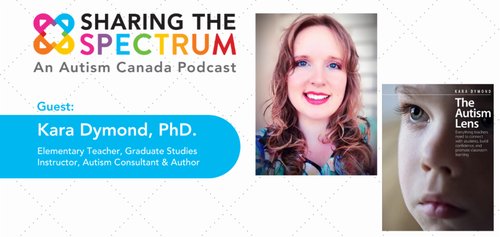
Join the conversation with Kara Dymond, author of the book The Autism Lens, a guide and resource for teachers (and parents) of students on the autism spectrum.
Kara shares tips and stories from her experience as an elementary school teacher in an autism classroom and as an autism consultant to a large Canadian school board.
It's a great conversation for educators and parents alike!
Listen to our conversation with Kara
|
|
|
End article-->
Autism Conference Mini-Series: Re-Thinking What We Know


Children’s Autism Services of Edmonton would like to invite you to join them for Part 3 of their Annual Conference Mini-Series. Please note the date of the live event is Friday, March 12th.
Speakers include Dr. Barry Prizant, Shelley Moore, and Dr. Juliann Woods.
New VIP Packages are available! They include the March 12th LIVE conference, plus access to all the videos from part one in October and part two in January! There are also other amazing VIP benefits, including a live Q&A on Saturday, March 13th with Ros Blackburn, and an exclusive interview with Dr. Jac Den Houting.
Don’t miss out!
Reserve your virtual seat today at www.caseconf.ca
|
|
|
End article--> |
|